My homeschool approach is to teach one theme each month to my three children. It is fair easier to organise my materials that way, and I find the learning to be more targeted. There is fair more repetition than the sporadic learning that can also take place in an immersive Chinese home learning environment. This month, we are learning all about fruits in Chinese!
I chose the fruit theme as it is highly functional (they all love fruits!) and we can practise the same Chinese words in our daily life.
By the end of the month with a play-based approach and focused teaching, my children could label and read 80% of fruits in Mandarin Chinese!!
Prepare Teaching Materials
As preparation I will have flashcards ready for games, posters up on the wall to reinforce the vocabulary words of the month, and workbooks printed out for the children to work on. I’m a stickler for preparing materials before teaching, so I will always be good to go!
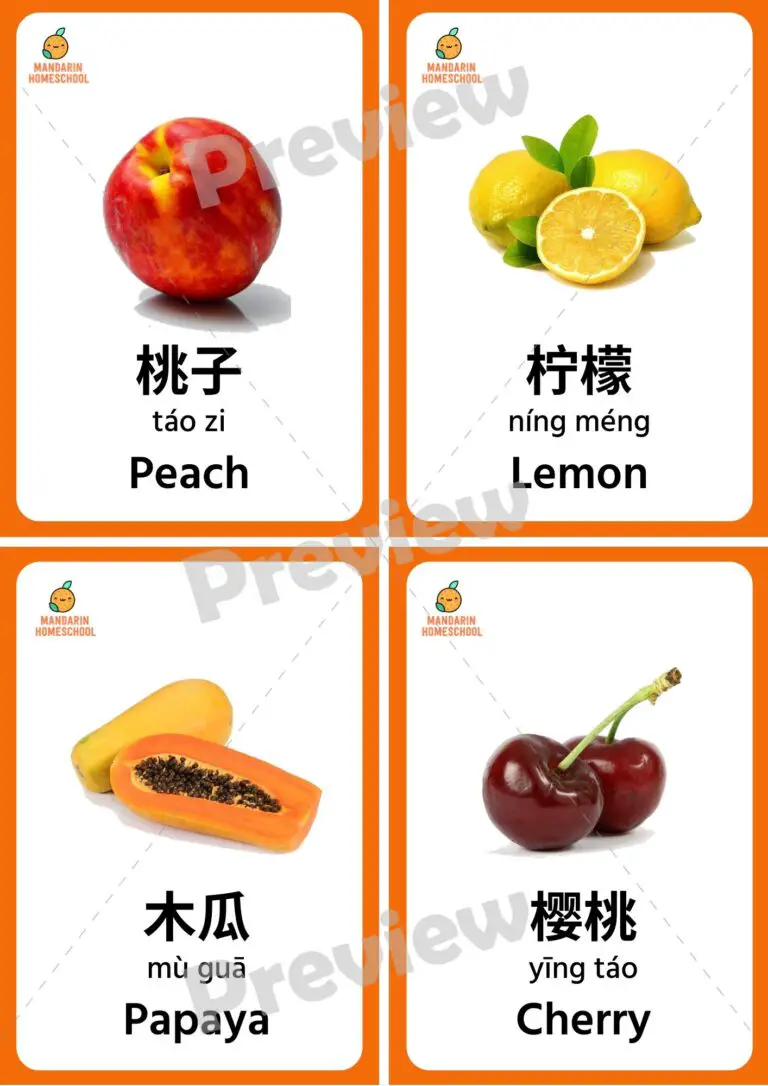
Chinese Vocabulary for fruits
I chose 20 of the most common fruits to teach: apple, orange, strawberry, blackberry, blueberry, pear, plum, peach, watermelon, honeydew, lime, lemon, coconut, papaya, mango, kiwi, grapes, banana, pineapple, and cherry.
Play-Based Learning Activities
Here are some of the play-based learning activities that worked for us.
- Memory game – I printed out 2 sets of flashcards and played memory game as a teaching activity. One simple twist of the game rules I did is that each time the children got a pair, they have to label it in Mandarin before they can put it aside. I’ve always loved memory game and so does the kids now. This is honestly one of the simplest and fun way to teach!
- Labelling boardgame – I create a really simple and fun labelling boardgame for the children to learn through play. You can find the full instructions and how to play this game here. *Please note: I used this game only when I was confident that the children could label 80% of the vocabulary.
- Flashcard Scavenger Hunt – My children loves scavenger hunts. There is a simple thrill to searching and finding things out. Instead of a drawn up list to tick off. I simply hid the second set of flashcards, and handed them different fruit flashcards, so they are not competing against each other to find the items. *You can use real or plastic fruits as well!
Chinese Workbooks to teach fruits
Apart from learning through play, we also worked on learning fruit vocabulary words through worksheets.
I created two workbooks for this theme. First is a vocabulary workbook and the second one is a word building workbook.
The vocabulary workbook works on these skill sets:
- Matching
- spot the difference
- Sorting
- cut and paste
- Sequencing
- word maze
- Listening
- Comprehension
- question and answer
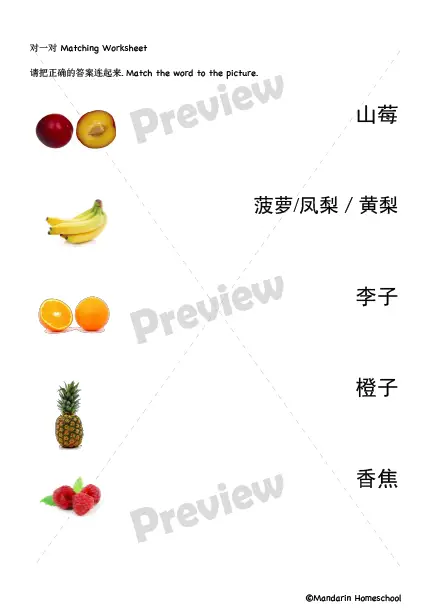
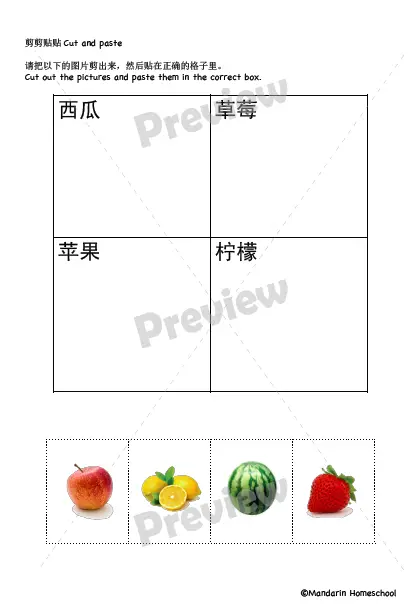
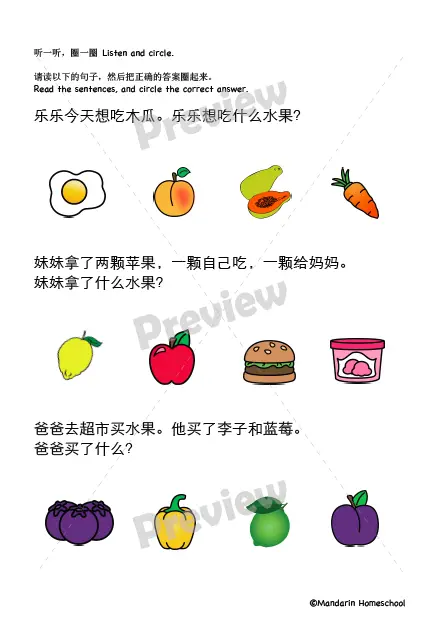
I drew on my expertise as a special educator to create aids within the workbook, and started off with the simplest of skills, matching and building up to listening comprehension skills.
For the word building workbook, I targeted colouring, tracing, writing and reading skills. Similar to the vocabulary workbook, I put in writing prompts, which are faded by the end of each worksheet to facilitate independent writing.
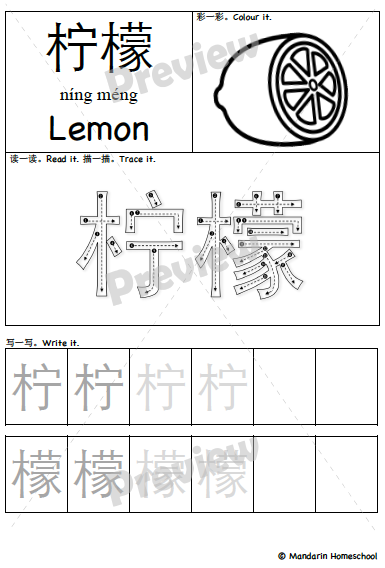
Where to download these Chinese printables
If you like what you see and would like to purchase my learning materials, they are all avaible aon my Mandrin Homeschool teacherspayteachers page!
And if you have any comments or feedback, please drop me a line. I would love to hear from you.
Thank you for reading!
Jean
